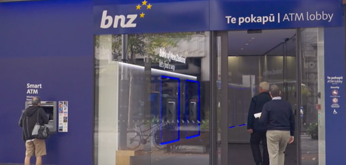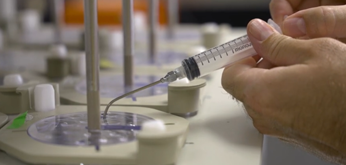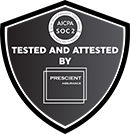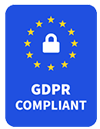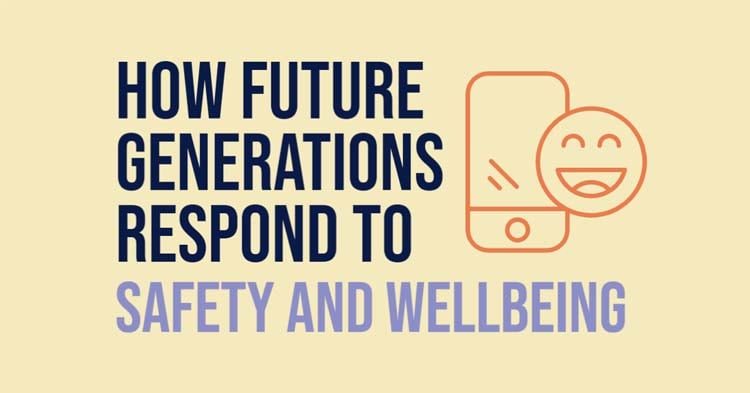
From avocado toast to understanding the nuances of TikTok, navigating the next generations is no easy feat. While Millennials are already firmly entrenched in the workforce, Generation Z (Zoomers) is just getting started.
A common mistake that older generations make is to lump these two groups together. While they all seem young, you might be surprised to learn that the age gap spans 14 year-olds all the way to 40-year-olds. Clearly, the two generations have their differences.
The ongoing challenge posed by health and safety is always working out the best way to engage your workers and get high commitment from everyone in creating a safety culture. Knowing the different strengths and challenges each of the younger generations faces is critical to ensuring that we understand what the world of health and safety means to them.
Gone are the days where new workers are content to put their head down and toil at their desks 60 hours per week, knowing that in 5 years’ time, their efforts will be rewarded handsomely with a promotion and pay increase. These younger generations - and the significant global events they’re growing up in - now demand a collective overhaul of corporate norms and have a different approach to work-life balance.
While some might shake their heads at what appears to be a dwindling work ethic, it’s worthwhile understanding the perspective and what’s created a mindset shift for these generations, Gen Z in particular. They might be young - and unfortunately dancing in front of their phones in public places making TikToks - but their relentless focus on mental health and demand for flexible working to create a healthy work-life balance might just help us all.
What Millennials (have already) brought to the table:
Already a group of fully-fledged adults, Millennials are well into their working years - from 25 - 40 years of age. Often known by the infamous avocado toast comment that dubbed this generation unable to afford a house due to overpriced brunch habits, Millennials are no stranger to the generational wars that plague today’s mediascape.
Bullied both by Boomers for their seemingly impractical, idealistic approach to life, and their snarky younger Zoomer siblings for their love of skinny jeans and dated humour, Millennials have weathered a few storms.
This generation is no longer the new kid in the office. They’re beginning to move into managerial positions and settle down, with a shifting focus to extensive mortgage debt and popping out a couple of kids. In 5 years’ time, Millennials are projected to make up nearly 75% of all workers. Understanding their perspective is critical.
Millennials were the first generation to make a collective push for a more flexible working week, and as a group questioned the traditional working week model. They wanted a greater focus on work-life balance, not solely deriving meaning from their job, as their predecessors (Boomers and Traditionalists) might. This generation also tends to have a more collaborative working mentality, preferring to work in teams and open offices with shared workspaces.
From a wellbeing perspective, this focus on finding a career that’s meaningful for the individual, a flexible working week and a collaborative approach to work, poses an advantageous situation for health and safety leaders.
Gen Z: Seeing the Millennial contribution and raising them one
Zoomers have begun to enter the workforce at one of the most critical turning points for workplaces worldwide: during the COVID-19 pandemic. The pandemic has created - and is still creating - a massive shift in how we approach work and what’s considered acceptable. Collectively, society has had to re-examine what’s important in the workplace, and what we can go without - which meetings are essential, or learning that in-person work isn’t as necessary as we once thought. We’re beginning to understand the importance of taking sick days seriously, and how working from home makes you miss a casual “water-cooler” chat in the office.
While those who’ve already had a few years behind them in the workplace have begun to shift their approach to work, Zoomers are entering the workplace in real-time and therefore accept the ‘new normal’ as their standard for work. In fact, researchers have noted that Gen Z is using this shift to their advantage, with a greater emphasis on demanding more autonomous work as a result. Millennials helped to drive a push for more flexible work, and Gen Z has helped to make flexible working the norm, rather than the outlier.
Another critical characteristic of Zoomers is that they’re considered digital natives. While Millennials are considered to be digital pioneers, Gen Z is the first generation to grow up with smartphones, and don't easily remember a time before high-speed Internet. As a result, their understanding of digital norms and practices has almost become an evolutionary-like instinct.
Much like their older counterparts, Gen Z places a large emphasis on the importance of workplace wellbeing, and values companies that actively engage in prioritising mental wellbeing.
Health and Safety Implications for both generations:
Both generations - having grown up either with the introduction of social media or with the direct influence of social media - are used to participation and two-way communication. One of the defining features of social media is that they encourage user participation and user-generated content (UGC). With this in mind, younger people are used to sharing opinions and perspectives and enjoy two-way conversation. When it comes to health and safety, opening up the floor for productive discussions where your workers have the opportunity to ask questions about safety rules can be a game-changer for increasing engagement.
As another consequence of social media, Zoomers are becoming accustomed to short-form content, rapidly transforming their attention spans. One of the negative side effects of longer screen time, and content becoming shorter and shorter (think YouTube videos, Instagram reels and TikToks) is that the brain becomes used to receiving larger bursts of dopamine more quickly. The result? An attention span that lasts only several minutes.
This has several glaring implications in the workplace, especially when it comes to teaching your youngest staff members about health and safety. Firstly, long meetings might fall on deaf ears, as their shortened attention span starts to come into play. Secondly, verbal discussions about rules and regulations may go in one ear and out the other - not staying firmly rooted in Zoomers’ long-term memories. If you want to grab their attention and make sure that the important information isn’t lost, perhaps try shorter, punchier visuals or videos that get to the point quickly and leave a strong impression.
Encourage self-directed, digital-based learning that challenges the worker to learn key safety protocols by themselves. Offer multiple opportunities for feedback and two-way discussions that help impress the importance of safe work practices to Millennials, while leaving room for them to critically think about the regulation.
Another useful way to approach health and safety is to gamify rules and regulations - without trivialising their importance - to increase engagement and participation from your younger workers. Gamification of important messages and key procedures has been found to be a useful method of increasing knowledge retention - making sure that the critical message will get across. If you can create a digital game that encompasses your safety procedures, you can ensure that safety training is accessible from the employee’s pocket at any time. You can also make learning about safety fun by appealing to people’s competitive side - set out challenges or hand out awards and create a leaderboard for those who achieve a high score. Adding an element of fun to your safety - whilst retaining the underlying, essential importance of why safety procedures need to exist - is a unique way of capturing your younger employees’ attention.
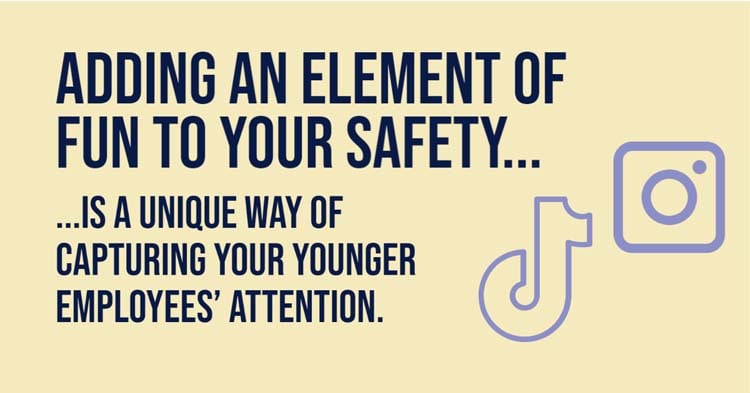
Final Words:
When it comes to health and safety, understanding the key differences and trends of each generation, and how they tend to interpret the world around them, is critical to get your message across and make sure that your people are engaged.
As health and safety leaders, our priority is adapting our message and approach to get full company-wide engagement with the importance of safe work. The more we can understand what works and what doesn’t, the safer we keep our workplaces.
It’s valuable to consider the age range of your team and which generation they might fit under. While you can lure some with avocado toast at meetings, perhaps your Zoomer employees need to follow a company TikTok page to learn about the regulations. The best case? You might go viral.
Want to know more about how to create a better health and safety culture? View ecoPortal smarter safety videos. ecoPortal health and safety software can also help your business. Try a demo or get in touch with the team at ecoPortal.



